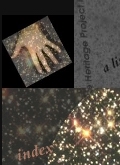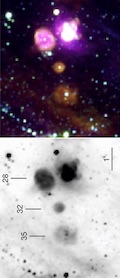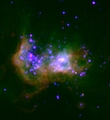



On the Form of the H II Region Luminosity Function
M.S. Oey & C.J. ClarkeObserved variations in the H II region luminosity function (HII LF) seen in spiral arm vs. interarm regions, and different galactic Hubble type, can be explained simply by evolutionary effects and maximum number of ionizing stars per cluster. We present Monte Carlo simulations of the HII LF, drawing the number of ionizing stars N_* from a power-law distribution of constant slope, and the stellar masses from a Salpeter IMF with an upper-mass limit of 100 M_sun. We investigate the evolution of the HII LF, as determined by stellar main-sequence lifetimes and ionizing luminosities, for a single burst case and continuous creation of the nebular population. Shallower HII LF slopes measured for the arms of spiral galaxies can be explained as a composite slope, expected for a zero-age burst population, whereas the interarm regions tend to be dominated by evolved rich clusters described by a single, steeper slope. Steeper slopes in earlier-type galaxies can be explained simply by a lower maximum N_* cutoff found for the parent OB associations. The form of the HII LF can reveal features of the most recent (~< 10 Myr) star formation history in nearby galaxies. AJ, 115, 1543
(Uncompress with 'gunzip' if necessary) |

